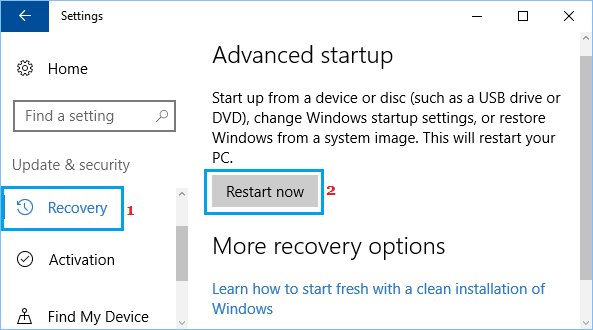

#ADVANCED SYSTEM RECOVERY WINDOWS 10 HOW TO#
Enjoyed this article? Discover how to get the most from your PC and new things to do in Windows Help & Advice.Before restoring your File History backup, create a new drive image to use the next time you need to reinstall Windows. Create a recovery CD or USB stick following the prompts, and next time you need to reinstall Windows, make sure your File History backup is up to date, then boot from your recovery media before restoring this drive image.Īll you'll need to do is bring Windows and your apps up to date, and reinstall new programs. Then, before you restore your File History backup, launch Macrium Reflect Free and take a new drive image. After reinstalling Windows and apps, reinstall your key programs and set them up as you like them. Reinstalling and setting up Windows again can be a chore, so speed up future reinstalls by creating a perfect recovery image. Windows 8.1, or backup of the system image that was created on Windows 7 will not be able to restore the system repair disk and recovery drive that was created on Windows 10. Get your perfect Windows setup quickly and easily next time you have to reinstall Speed up future Windows reinstalls For restoration of the system image backup, you can only operate on the backup system image that was created on Windows 10. Again, take the time to download the latest versions and set each one up. Of course, you'll need to reinstall your key desktop applications, too, after this has been done. The step-by-step walkthrough reveals everything you need to know. Once you’re done reinstalling Windows 10, you’ll have a brand new system at your disposal and it’s time to reinstall your apps, apply preferences and restore backed up data. Finally, click 'Reset' and let your PC do the rest. You'll also be given an option to 'clean the drive fully' – again, skip this unless you're selling on your PC.

Unless you're planning on disposing of the PC, select 'Only the drive where Windows is installed' to protect data files stored on other partitions or drives. The reset process is simple: your PC reboots, then after a pause while things are being prepared, you may be confronted by a screen asking you if you want to remove files from all of your drives, or just the drive that Windows is installed on.
#ADVANCED SYSTEM RECOVERY WINDOWS 10 INSTALL#
In practical terms this means you'll avoid a lengthy series of post-install updates to download and install in order to bring Windows itself back up to date. One of the benefits of this new approach is that Windows attempts to recover from a previously created system image or – failing that – using a special series of install files that download the latest version of Windows during the reinstall process.


 0 kommentar(er)
0 kommentar(er)
